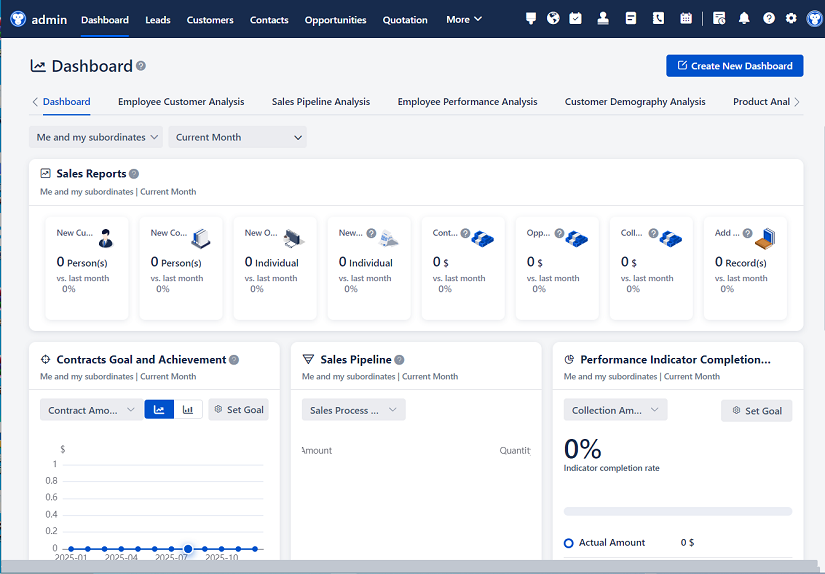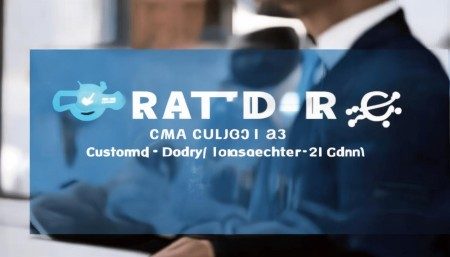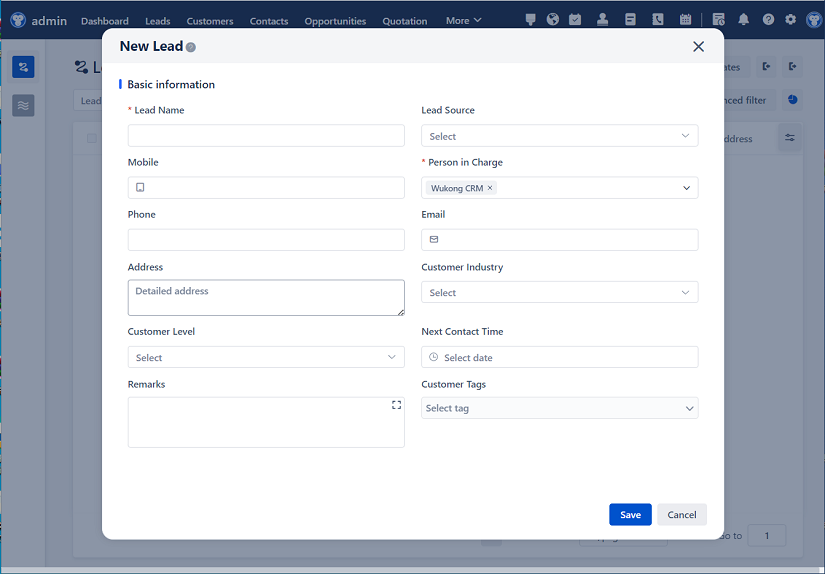
△Click on the top right corner to try Wukong CRM for free
So, you know how businesses these days are all about keeping their customers happy and coming back for more? Yeah, I’ve been thinking about that a lot lately, especially when it comes to customer relationship management—CRM for short. Honestly, it’s kind of wild how much this stuff has evolved over the years. Like, remember when companies just kept customer info in spreadsheets or dusty filing cabinets? Yeah, good times—but not exactly efficient, right?
Now, pretty much every business, whether it’s a small startup or a massive corporation, is using some kind of CRM software. And honestly, it makes sense. These tools help you keep track of every interaction with your customers—emails, calls, meetings, even social media messages. It’s like having a super-organized assistant who never forgets a name or a detail.
But here’s the thing: there are so many CRM brands out there. It’s kind of overwhelming, if I’m being honest. You’ve got Salesforce, HubSpot, Zoho, Microsoft Dynamics, Pipedrive, and that’s just scratching the surface. Each one claims to be the best, but how do you really know which one fits your needs? That’s what I wanted to dig into—comparing these big players and seeing what they actually offer in terms of functions and usability.
Let’s start with Salesforce. I mean, this one’s kind of the granddaddy of CRMs, right? It’s been around forever and has this massive reputation. From what I’ve seen, Salesforce is super powerful—like, seriously feature-packed. It can handle everything from lead tracking to complex sales forecasting, marketing automation, and even customer service workflows. It’s especially popular with larger companies that need deep customization and integration with other enterprise systems.
But—and this is a big but—it’s not exactly the easiest thing to use. I’ve talked to a few people who’ve tried setting it up, and they said it took weeks just to get the basics running. Plus, the pricing? Oof. It can get really expensive, especially once you start adding on all the extra modules and user licenses. So yeah, if you’re a big company with a solid IT team and budget, Salesforce might be worth it. But for a small business? Maybe overkill.
Then there’s HubSpot. Now, this one’s kind of the friendly neighbor of the CRM world. I actually really like how approachable it is. The free version is surprisingly capable—you can manage contacts, track deals, and even run basic email campaigns. And the interface? Super clean and intuitive. I tried it once, and within an hour, I was already logging calls and setting follow-up reminders. No tech degree required.
What I also appreciate about HubSpot is how it ties into marketing and sales tools seamlessly. Like, if you’re running a blog or doing email marketing, HubSpot makes it easy to see how those efforts connect to actual customer interactions. It’s great for small to mid-sized businesses that want an all-in-one platform without too much complexity.
But, of course, there are limits. Once you start needing more advanced features—say, complex reporting or multi-channel support—you’ll probably need to upgrade to a paid plan. And while it’s more affordable than Salesforce, the costs can still add up as your team grows. Still, for a lot of companies, HubSpot strikes a really nice balance between power and simplicity.
Now, let’s talk about Zoho CRM. This one’s kind of the underdog, but don’t sleep on it. I was actually pretty impressed when I checked it out. It’s got a ton of features—AI-powered sales assistant, workflow automation, territory management—and it’s way more affordable than a lot of the others. I mean, for a small team, you can get a solid setup for like $14 per user per month. That’s a steal.
The interface is a little less polished than HubSpot’s, I’ll admit. It took me a few minutes to figure out where everything was. But once I got the hang of it, it was pretty smooth. And the customization options? Super flexible. You can tweak fields, create custom modules, and automate tasks without needing a developer.
One thing I really liked was Zia, their AI assistant. It actually gives you smart suggestions—like when to follow up with a lead or which deals are most likely to close. It felt kind of futuristic, honestly. And for businesses that want powerful tools without breaking the bank, Zoho is definitely worth considering.
Then there’s Microsoft Dynamics 365. Now, if your company is already deep into the Microsoft ecosystem—using Outlook, Teams, Excel—this one might feel like a natural fit. I’ve seen companies switch to Dynamics just because it integrates so smoothly with their existing tools. You can pull customer data right into Excel, schedule meetings in Outlook, and even use Power BI for advanced analytics.

But here’s the catch: it’s not exactly user-friendly for beginners. The setup can be a bit clunky, and the learning curve is steeper than HubSpot or Zoho. Plus, like Salesforce, it’s on the pricier side. So unless you’re already invested in Microsoft products or need enterprise-level functionality, it might not be the best starting point.
Pipedrive is another one that’s been getting a lot of buzz, especially among sales teams. I’ve heard people say it’s built “by salespeople, for salespeople,” and honestly, that kind of shows. The whole interface is centered around the sales pipeline—visual, drag-and-drop, super easy to see where each deal stands.
I think what makes Pipedrive stand out is how focused it is. It doesn’t try to do everything. Instead, it does sales tracking really, really well. You can automate follow-ups, set activity reminders, and even integrate with email and calendar tools seamlessly. It’s lightweight, fast, and perfect for small sales teams that want clarity without clutter.
But if you’re looking for strong marketing or customer service features, Pipedrive might leave you wanting more. You’d probably need to pair it with other tools, which could get messy. So it’s great if sales is your main priority, but maybe not the best all-in-one solution.
Now, let’s talk about functions—because that’s really what matters, right? At the end of the day, you want a CRM that helps you manage customers better. So what are the key functions you should look for?
First, contact management. This is the basics—being able to store names, emails, phone numbers, company info, and notes. All the CRMs I mentioned do this well, but the way they organize it can vary. Some use lists, others use visual pipelines or timelines.
Next, sales automation. This is huge. You don’t want your team manually entering every follow-up task. A good CRM should automate reminders, schedule emails, and even suggest next steps. HubSpot and Pipedrive are especially strong here.

Then there’s marketing integration. Can you track email campaigns? See which leads came from which ads? Sync with social media? HubSpot and Salesforce lead the pack here, but Zoho and Dynamics aren’t far behind.
Customer service tools are another big one. Think ticketing systems, knowledge bases, live chat integration. Salesforce Service Cloud and Microsoft Dynamics really shine here, especially for companies with dedicated support teams.
Analytics and reporting? Super important. You need to know what’s working and what’s not. Salesforce and Dynamics offer deep, customizable reports, while HubSpot and Zoho keep it simpler but still useful for most businesses.
And let’s not forget mobile access. These days, people are on the go. A good CRM should have a solid mobile app so your team can update records from anywhere. All the major players have this, but some apps are smoother than others. HubSpot’s mobile experience, for example, feels really polished.

So, which one should you choose? Well, it really depends on your business. If you’re a small startup with a tight budget and a small team, I’d probably lean toward HubSpot or Zoho. They’re affordable, easy to use, and cover most of what you’ll need early on.
If you’re a growing mid-sized company with more complex needs, maybe Zoho or Pipedrive would work better—especially if sales efficiency is your top priority.
And if you’re a large enterprise with multiple departments, deep integration needs, and a dedicated IT team, then yeah, Salesforce or Microsoft Dynamics might be worth the investment.

But here’s the thing—don’t just pick one because it’s popular. Take the time to test a few. Most of them offer free trials or freemium versions. Play around with the interface, see how it feels, ask your team what they think. Because at the end of the day, the best CRM is the one your team will actually use.
Also, think about scalability. Will this tool still work when you double in size? What about in two years? You don’t want to switch CRMs every 12 months—that’s a nightmare.
And integration! Make sure it plays nice with the tools you already use—email, calendar, accounting software, etc. A CRM that doesn’t connect well with your other systems is just going to create more work, not less.
Oh, and customer support—don’t overlook that. When something goes wrong (and it will), you want to know help is available. Salesforce and HubSpot have solid support teams, but smaller platforms might take longer to respond.
Look, I get it—choosing a CRM can feel like a big decision. But it doesn’t have to be stressful. Just take it step by step. Figure out what your team actually needs, try a few options, and go with the one that feels right. It’s kind of like picking a new phone—you don’t need all the bells and whistles if the basics work well.
And hey, if you start with a simple one and outgrow it later? That’s totally fine. Growth is good. The important thing is that you’re making an effort to manage your customer relationships better. That’s what really counts.
FAQs (Frequently Asked Questions)
Q: Is HubSpot CRM really free?
A: Yes! HubSpot offers a completely free version of their CRM that includes contact management, deal tracking, task automation, and basic reporting. It’s a great way to get started without spending a dime.
Q: Can I switch from one CRM to another later?
A: Absolutely. Most CRMs allow you to export your data, and many even offer migration tools or services to help you move smoothly. Just plan ahead and back up your data.

Q: Do I need technical skills to use a CRM?
A: Not really. Platforms like HubSpot and Pipedrive are designed to be user-friendly. You might need some help setting up integrations or advanced automations, but day-to-day use is usually pretty straightforward.
Q: Which CRM is best for small businesses?
A: HubSpot and Zoho CRM are often top picks for small businesses because of their affordability, ease of use, and solid feature sets.
Q: Can a CRM help with email marketing?
A: Yes, many CRMs—especially HubSpot, Salesforce, and Zoho—include built-in email marketing tools or integrate seamlessly with platforms like Mailchimp.
Q: How important is mobile access?
A: Very. If your team works remotely or travels often, having a reliable mobile app is essential for keeping customer data updated in real time.
Q: Are there CRMs specifically for customer service?
A: Definitely. Salesforce Service Cloud and Microsoft Dynamics 365 Customer Service are built specifically for managing support tickets, live chat, and customer inquiries.
Q: Can I customize my CRM?
A: Most CRMs allow some level of customization—adding custom fields, creating workflows, or building reports. Salesforce and Zoho offer the most flexibility here.
Q: What if my team hates using the CRM?
A: That’s a common issue. Make sure to involve your team in the selection process, provide training, and choose a system that fits naturally into their workflow.
Q: How much should I expect to pay for a CRM?
A: It varies. Free plans start at
Related links:
Free trial of CRM
Understand CRM software
AI CRM Systems

△Click on the top right corner to try Wukong CRM for free